
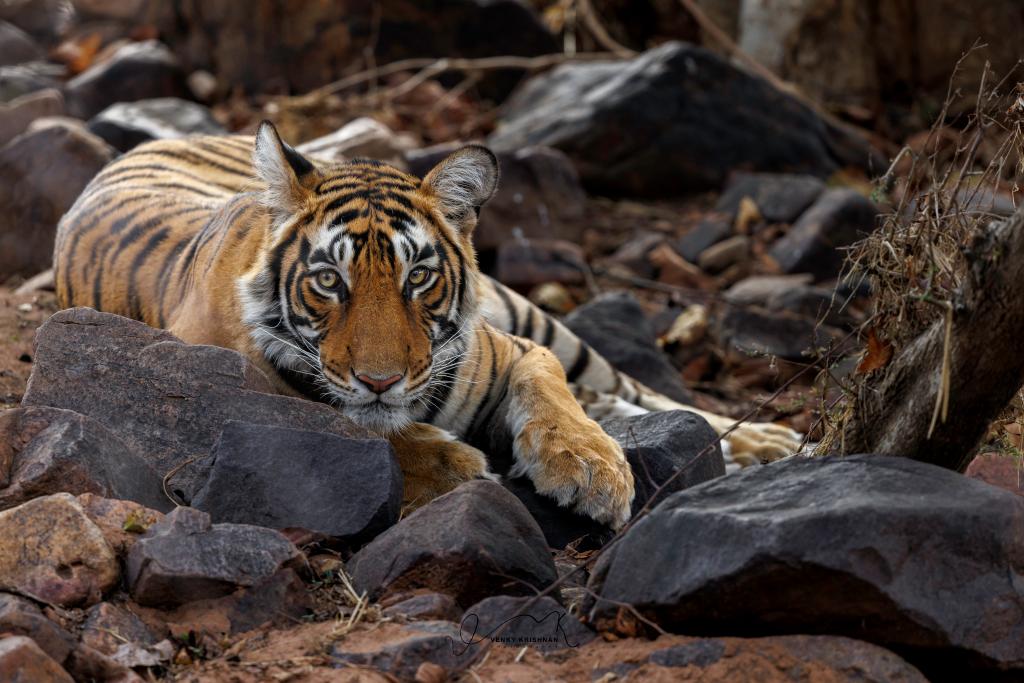
Tyger Tyger, burning bright,
In the forests of the night;
What immortal hand or eye,
Could frame thy fearful symmetry?
William Blake wondered about the fierceness of tigers so long ago. And we still are in awe of the greatest of the wild cats and have taken tiger tourism to an unprecedented pedestal over the years. This year, as we celebrate the golden jubilee of Project Tiger, let us take you on a wild safari through the Ranthambhore forests.
When it comes to tiger tourism, Ranthambhore ranks among the top national parks in the country, along with Jim Corbett, Kanha, Pench, Bandhavgarh etc.
Remembering Machhli – Pride of Ranthambhore and India
Sawai Madhopur’s daughter, India’s pride who went on to become the World’s most-photographed tigress, Machhli played a very significant role in the success of Project Tiger. Usually, tigresses have two or three litters while Machhli in seven years went on to become a mother five times to eleven cubs! Machhli’s cubs are now boosting the population of Sariska Tiger Reserve too. Most of the tigers of Ranthambhore are from her lineage. A fearless tigress in the true sense of the word, Machhli was a skilled hunter and once even fought and killed a 12-foot-long mugger crocodile. She ferociously protected her cubs and roamed the forests like a true ruler of the jungle. These attributes earned her many names – Super Mom, Queen Mother of Tigers, Tigress Queen of Ranthambhore, Lady of the Lakes, and Crocodile Killer. So many businesses, resorts, and restaurants in Sawai Madhopur are named after her. She even has a 50-minute documentary film on her life titled Tiger Queen. Let us venture into the land of the most famous tigress in the world.
The Safari
The prerequisites:
Your Ids, the tickets, sun hat, shades, water bottles, comfortable clothes and shoes – cotton clothes in summer and thick jackets and sweaters in winter and most importantly, your camera with a zoom lens. However, the above preparedness comes with a disclaimer – you may or may not see the tiger. How disappointing does that become when you are all geared up and ready with a hundred selfies in the phone of your look before witnessing the big cat and the cat decides not to turn up? But this is quite a regular outcome of a lot of safaris and the disappointment also is as palpable as was the anticipation before hopping on to the safari ride, edging almost to gloom. We too, with lots of excitement went for a safari into the Ranthambhore forest. The jungle safari is divided into zones to avoid overcrowding and disturbance to the inhabitants of the jungle. We were allotted Zone 1, which though short is supposedly one of the preferred zones among regular visitors. Apparently, this zone falls under the territory of the Tigress Sultana and the chances of spotting her are pretty high here. But lady luck decided to stay outside the zone gates and we despite trying hard, as if trying hard has any meaning here, could not see even a panther leave alone the tiger. But then, you can not force or guarantee animal sightings in the wild. It is a matter of complete happenstance.
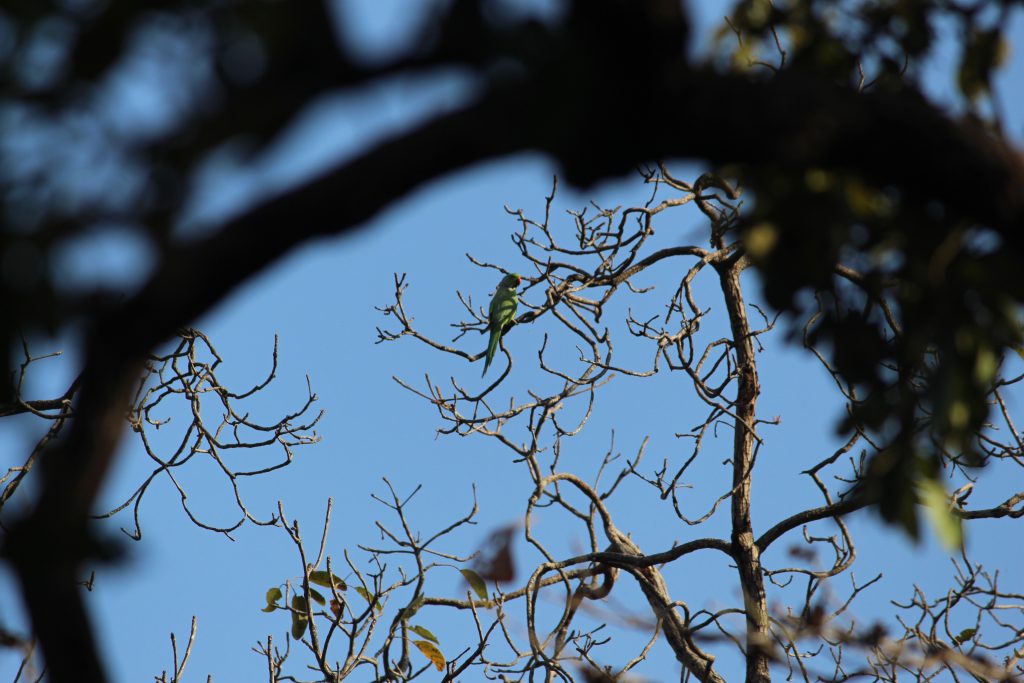
The ride through the jungle is though very exciting. The other animals and birds that one encounters along the way are a delight too, seeing them in their natural habitat, oblivious to the fact that they are a delicacy to some other citizens of the same jungle, happily munching on whatever the day brings them. The rawness of a jungle vis a vis a manicured garden also is eye-catching. Vibrant flowers growing in the wild in no particular patterns, cacti sitting at the edges of the path, termite hills growing like a fence, tall trees providing support to the vulnerable vines and grass taking up all the leftover space. The disorderly order of the jungle makes it a very intriguing venture.
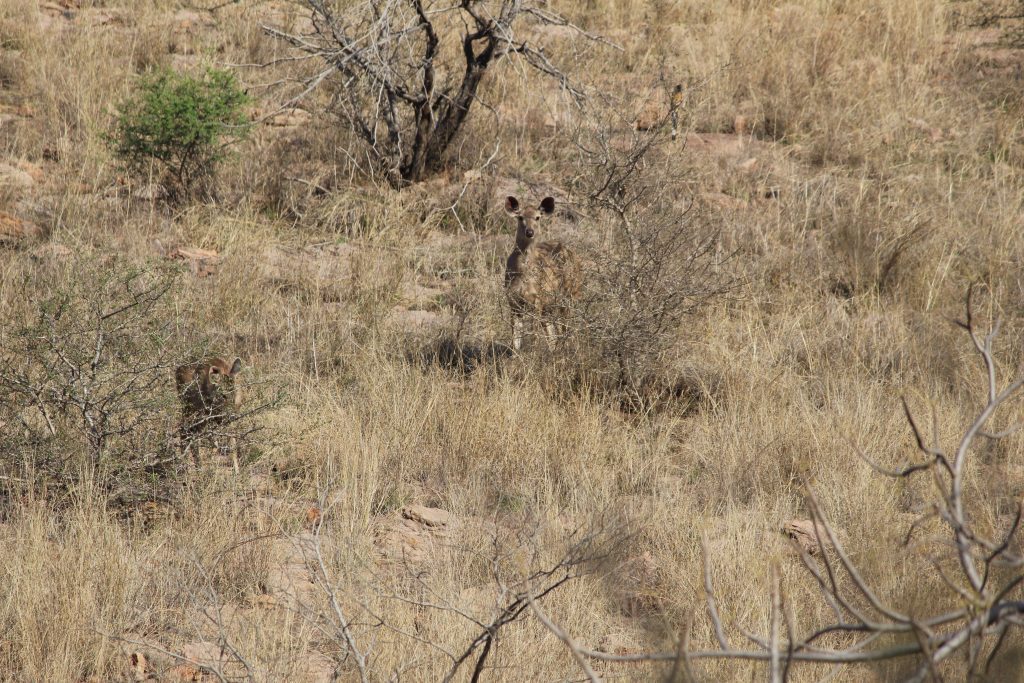
Then there are those who you see regularly too, the monkeys, deer, hare, owls, bats, a plethora of common and exotic birds, wild boars grunting around, the tall blue bulls who are more of antelopes and less of bulls and sometimes a slithering reptile. Mongoose can be seen playing the traffic wardens and the notorious Rufous Treepie dive right into your jeep for a treat you might be carrying. There is constant excitement during the game drive and a lot of opportunities to click some aesthetically beautiful shots. The sunlight streaming through the trees makes for a lovely hazy bokeh, the foliage, both green and dry add character and the trees around a watering hole make for the best backdrops. Enchanted, and a tad bit disappointed too, we returned to our hotel. Ranthambhore safari rides pick you up from your hotel and drop you back at the same place- a privilege accorded to the tourists.
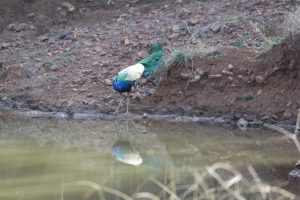
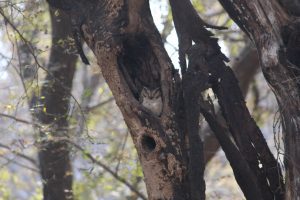

Safari rides can really tire you out, tiger or no tiger, you do need a satiating meal after the safari. After a quick brunch break, we made our way to the UNESCO World Heritage Site of the Ranthambhore Fort.
The Ranthambhore Fort
The Garh Ranat Bhanwar, the phonetically easy name of which is ‘Ranthambhore’ is a very vast fort, spread over many acres of land part of which is under the forest cover. The section that the tourists can visit though is walkable with a slow incline right up to the temple of Trinetra Ganesh Ji, the supreme deity at the Ranthambhore Fort.
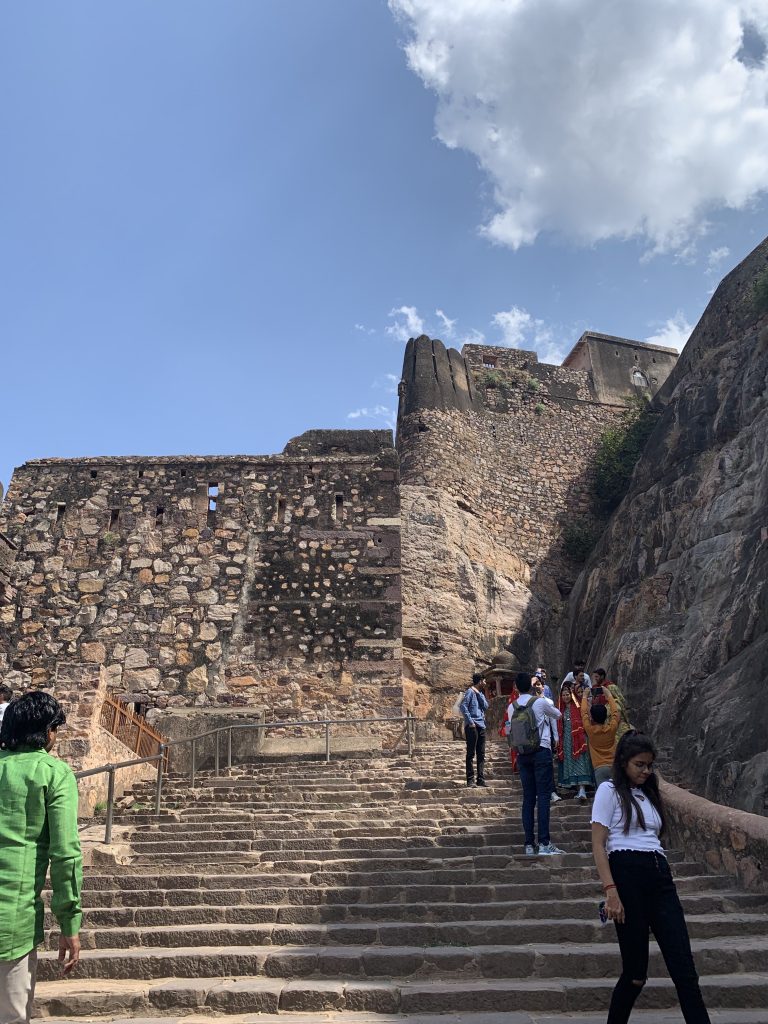
We began our ascent in the company of a knowledgeable guide to give us insights. The first of the seven gates or Pols of the fort is called the Navlakha Pol, the next being Hathi Pol which has a rock resembling an elephant right in front. Here you also see an intriguing statue, that of a head and two hands. This is believed to be that of a traitor, Ranmal Mahawat who betrayed Hammirdev in a significant battle against the Mughals and Hammirdev cut his head and hands off. This statue was built as a reminder to every one of the fate a traitor deserves.

Moving on, one reaches another interesting gate, the Andheri Gate. This is a trap door and the gate opens on its hinges to block the entrance to the rest of the fort while the path leads one to a fatal plunge into a valley ahead. How clever was that! The many cobbled and smooth but beaten and weathered pathways lead us to a curve in the fort wall where we got the best panoramic shots from. In the distance, one could see a lake surrounded by the Aravalis, if only the season was right! We visited the Ranthambhore Fort in March which is a dry month preceding the harsh summer.
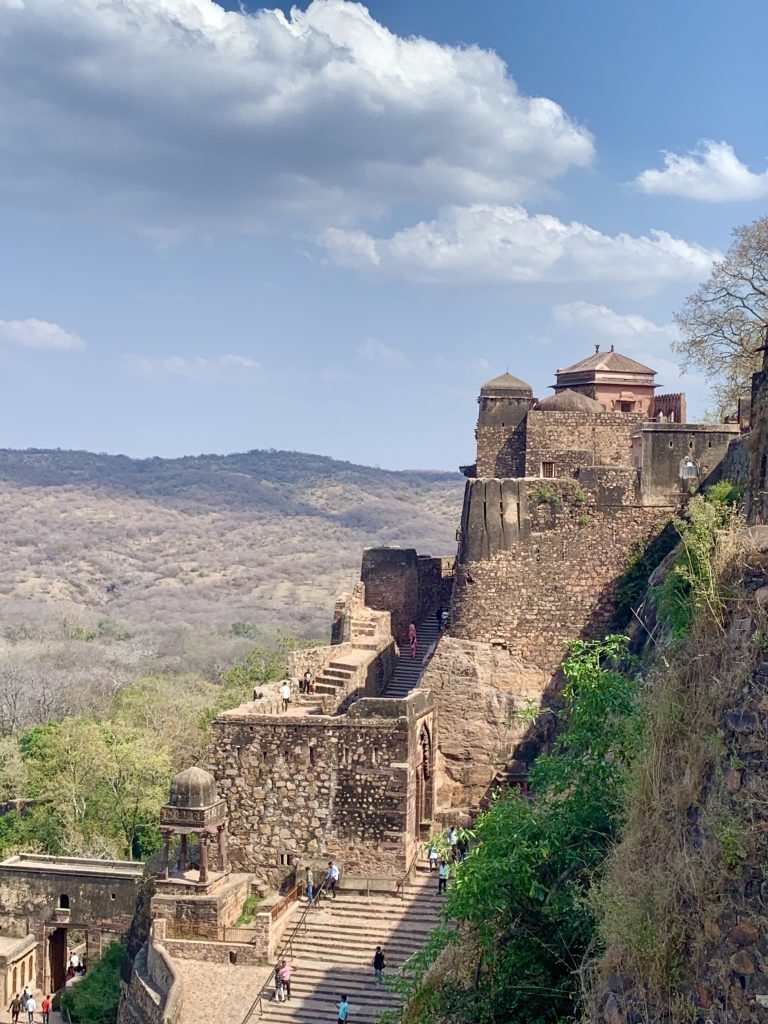
Many small and big temples and shrines dot the fort complex. Gradually taking one step at a time, we reach a hidden secret temple of Lord Shiva – the Gupt Mahadev. Not many know about this concealed place of worship of the rulers of the fort. Moving on, we crossed the Rani Mahal, Padmavati Talab and many small and big ruins of palaces and other chambers. And finally, we reach the temple of Trinetra Ganesh ji. Besan laddoos for Prasad and we pay our respects here, take a short tea halt and begin our return walk. On the way, one has to pay a tax in Prasad to the waiting langoor brigade. They gently pick whatever you offer right off your hands, no snatching, no scurrying away.
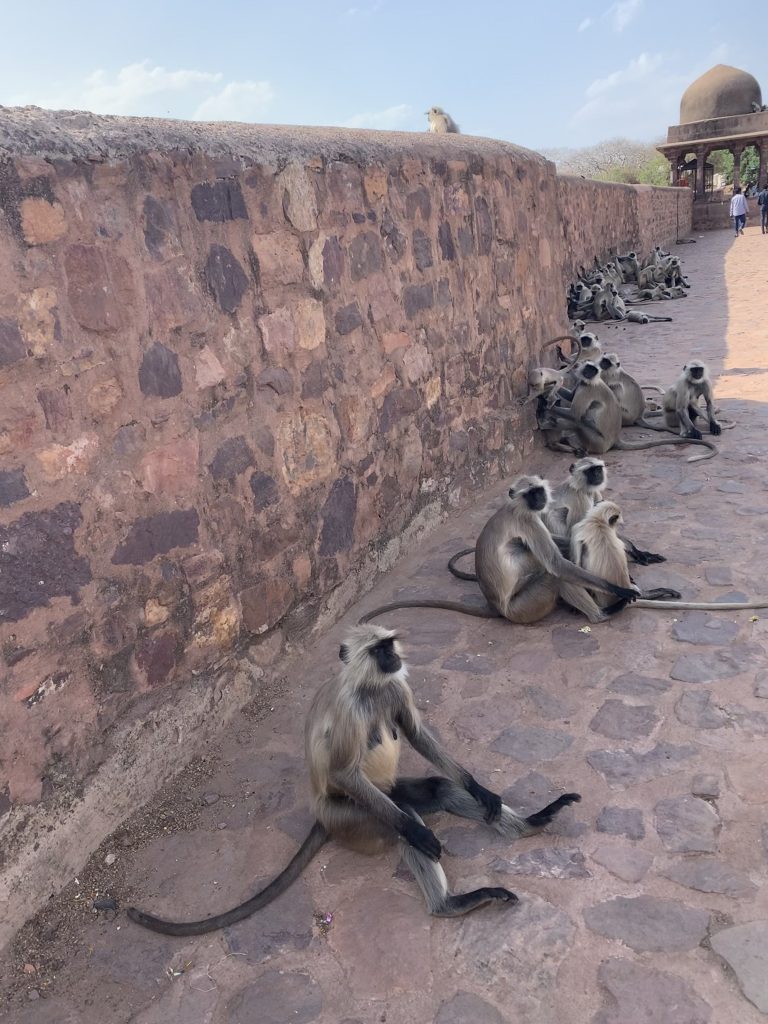
We took another route for our return journey. This too had many temples along the way. One can see the Meena Bazaar and horse stables on this path. Descent is as easy as the ascent was and in no time we were at the parking area where we were met by our waiting car and driver.
Chambal Excursion
Ranthambhore Fort done, now we wanted to visit the Chambal for a quick visit to see the alligators. The drive is around 40 km and takes about an hour to reach. But it sure is worth it. Since one is already out to see some wildlife, one might as well meet the water babies too. These magnificent cold-blooded reptiles are a sight to behold. They look exactly how a Saturday evening should be – belly full of food and resting like there’s no tomorrow! The only difference is that they are perpetually in a Saturday evening mode while our Saturdays very quickly transition to Mondays.
With this little excursion, we were through with the entirety of our Ranthambhore vacation. The more enthusiastic ones would have taken a couple of more safaris till they could finally say guten tag to the royal highness, the Royal Bengal Tiger, but we had a tight itinerary to cover. Next on our itinerary was the Bharatpur Bird Sanctuary. You may read all about the Keoladeo National Park here, a beautifully penned travelogue shared by our traveller friends, Shameera and Rafiq.
Best time to visit
The Ranthambhore National Park is open for tourists from October to May and takes a break during the months of June, July, August and September. The best time for sighting is considered the time prior to the monsoon season i.e., March, April and May as the forest is dry and the animals are drawn to the water bodies due to the rising temperature. October to February is a comfortable season though a bit on the colder side.
Planning a safari
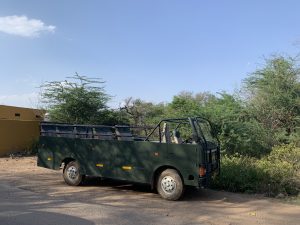
Canter

Gypsy/Jeep
The entire quota of safaris is booked online and there is no provision of obtaining an entrance at the gates physically. The safari options include a jeep ride or a shared ride in a modified truck which is referred to as a canter. The prices of course differ. The details are given on the website. You may click on the link given below to book your safari:
https://fmdss.forest.rajasthan.gov.in/MiddleWare/SubModuleFMDSS1?linkparam=YdgSMPLU6mrPPz6aVjWElAjRGk9WE1sdwTdQCGGBVRxaZOjYqEOdEQ==
Shopping
All tourist destinations have something special that one can carry as a memento or souvenir. Ranthambhore too is high on the shopping front. The village women here run their small workshops and boutiques with the help of a few NGOs. These boutiques sell hand-embroidered garments, textiles, furnishings and home decor articles. Besides these, a must-possess indulgence from Ranthambhore would be a nice tiger-themed hat or a jacket in camouflage colours.
How to reach
Ranthambhore is around 180 km from Jaipur International Airport. You may fly into Jaipur and take a car from there to Ranthambhore. Sawai Madhopur is well connected by train network too. You can also drive in from Delhi, which is around 340 km and would take close to six hours to reach.
Don’t forget
All set to now visit the roaring tigers? Visit the leopards of Jawai next. Shall share the details soon, keep a tab on our blog page.
Till then, happy sightings!